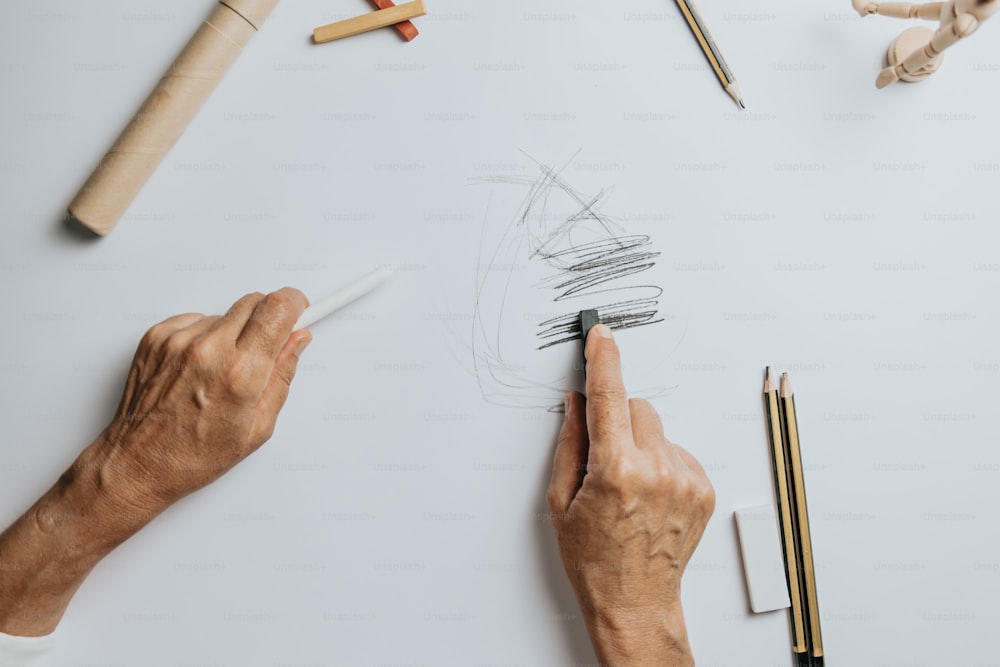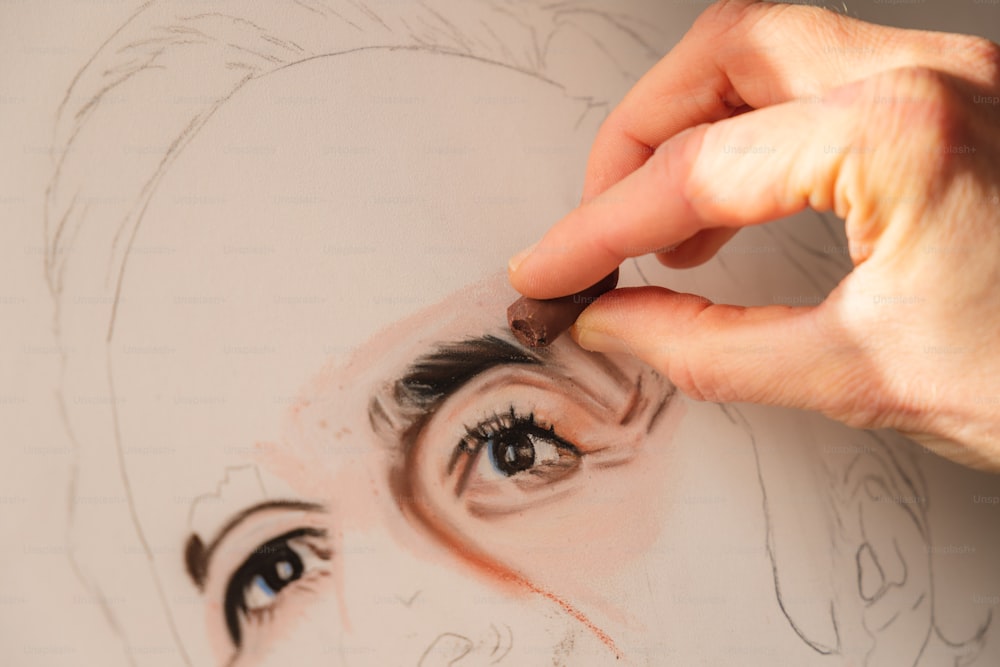It’s crucial to give your drawing some sort of protection once you’re done with it. Wax paper, frames, and page protectors are just a few of the alternatives available for preserving your drawing
Put wax paper between the pages of your sketchbook to prevent scuffs and dust from damaging the pages. Remember to use fixative to store your drawings properly away from moisture and light to prevent them from being damaged by these factors.
Sealing a pencil drawing
 (Photo from istock)
(Photo from istock)
Use page protectors, fixative, wax paper, frames, or wax paper to preserve your sketches and drawings. Wax paper should be placed in between the pages of your sketchbook to prevent damage.
Protecting drawing with Fixative
Fixative, a type of adhesive, can be used to protect drawings from fading and water damage. You can purchase fixative in art supply stores or online. Apply fixative to your drawing with a brush, Roller ball Pencils, or even your fingers. Let the fixative dry completely before framing or storing your artwork. Keep in mind that fixative will make drawings heavier, so you might want to consider using it only temporarily, if necessary.
Protection with wax papers and frames
Your drawings can be kept secure and conserved by using wax paper, frames, or page protectors. Waxing a drawing will prevent future paint smudges and paint peeling.
If you decide to frame your drawings, make sure to measure the artwork first so you can purchase the appropriate size frame. For protection and organization, page protectors are reusable adhesive sheets that stick straight onto the pages of a book or document.
Wax paper between sketchbook

Wax paper should always be kept between the pages of a sketchbook to stop moisture and dirt from deteriorating the pages over time. Start by pressing down with your palm to spread an even layer of wax across the entire sheet to seal a pencil drawing.
Before cutting out the drawing with a sharp knife or pair of scissors, allow it to cool fully. The firmer the surface, the better. To ensure that your drawings appear beautiful for many years to come, keep them safe in their original sketchbooks. Your pages can be easily safeguarded and given a longer lifespan by waxing them.
Preserving pencil drawing
Follow these easy procedures to preserve a pencil drawing for future use or merely as a work of art: Get parchment paper first, and if required, cover the drawing with a piece of paper to protect it.
Before presenting the drawing, let it entirely dry, even if only for a short while. Be cautious when storing drawings away because they might be ruined by heavy dampness and sunlight.
Hairspray as a fixative for drawing
Pencil drawings can be sealed with hairspray, although this is not a long-term fix. The drawing will start to come loosen again if the hairspray is taken off too soon. As an alternative to hairspray, you might try utilizing a common adhesive like glue or sticky tape.
A fixative that can be used to shield drawings from erasing and smudges is hairspray. Since professional art fixatives are usually preferable but hairspray also works in a pinch, it is also helpful outside of the beauty salon. Avoid overusing hairspray since it could harm your hair.
Hairsprays- easy to apply and remove

When using hairspray as a fixative, you don’t have to worry about getting it on your hands or clothes; just spray it on the area you wish to protect and let it dry naturally.
Professional fixatives
Instead of utilizing expensive art fixatives like varnish or resin-based treatments, try using hairsprays if you need to fix pencil drawings quickly. These substitutes cost more than hairsprays, but they are often more dependable and less prone to harm things.
Sealing pencil sketchbooks
When using H-Grade pencils or ink, fixative sprays can be used to seal pencil sketches in hardbound sketchbooks, as well as hairspray for loose drawings. Rubber bands and wax paper between pages will keep the book closed tightly when not in use, protecting your sketches from smearing.
H-grade pencil or ink drawings need to be fixed using an archival fixative like glycerine or urea combined with water after being completely dried out (waxing it first is optional). If you lose your notebook, your sketchbook will still be safe.
Can pencil drawing be varnished?

For best results, wait until the vanishing process is finished, dust off any dirt and other materials that may have been applied, and then apply a light coat of varnish or fixative before varnishing your pencil drawing. For a neater finish, use a fine-pointed brush to apply the finishing touches in specific areas.
Laminating pencil drawing
You’ll need fixative sprays, laminating or framing supplies if you wish to laminate a pencil drawing. You should carefully follow the directions before beginning because the application time is dependent on the size of your drawing.
Once it has been applied, take care not to move or handle the artwork improperly as this could cause harm. Then, exercise patience. An image typically needs 24 hours to completely dry out. Remember that you have a variety of alternative options for displaying your drawings, including framed prints and mosaic tiles.
Can pencil drawing be sealed?

By framing them or keeping them in an airtight container, you can further safeguard your drawings from fading and dampness. Finally, make sure to store your drawings in a locked drawer to protect them from harm such as dust, fingerprints, and other factors.





One Comment on “Drawing paper: Tips for protecting and preserving ”